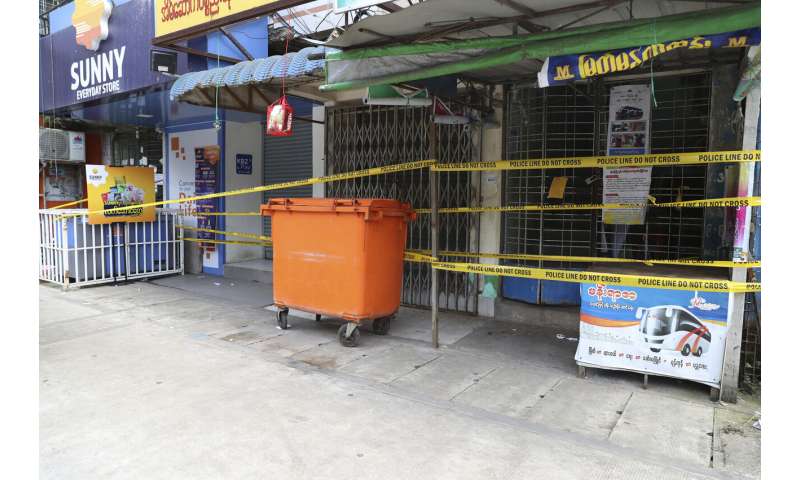

Myanmar on Friday reimposed its toughest measures so far to control the spread of the coronavirus, banning travel out of the country’s biggest city, Yangon, and grounding all domestic flights.
Both measures, announced just hours before taking effect, will be in place until Oct. 1.
An upsurge in coronavirus cases that began in August in the western state of Rakhine has since spread to other parts of the country. Until the latest outbreak, Myanmar appeared to have largely been spared from the pandemic.
Health authorities had already ordered partial lockdowns in 29 of Yangon’s 44 townships, including 20 on Thursday. New roadblocks were set up Friday in parts of the city, with some smaller streets closed while main roads remained open. As the country’s commercial capital, Yangon is a transportation hub and transit point.
“Some might think that these rules and regulations are too restrictive,” said the country’s leader, Aung San Suu Kyi. “However, if we all obeyed these restrictions strictly for two or three weeks, we can arrive at a situation when this disease would be under control.”
The Health Ministry on Friday announced 115 new confirmed cases, bringing the total to 2,265, including 14 dead. The Yangon regional government said the number of locally transmitted cases there from Aug. 24 to Tuesday totaled 656.

Stay-at-home orders issued for parts of Yangon this month, and for all of Rakhine state in August, call for partial lockdowns, with limited trips such as those for food.
The Election Commission this week also banned political campaigning in the locked-down areas ahead of Nov. 8 polls.
The new ban on domestic flights follows attempts to trace the thousands of people who have flown from Rakhine since Aug. 10 but only about half of whom had reported themselves to authorities. In an unusual move to track them down, the names of the errant travelers were published in newspapers.
In her Thursday speech, Suu Kyi warned of the seriousness of the situation, pointing out that the rate of both infections and deaths was faster than in March and April when the disease first hit Myanmar.
Source: Read Full Article